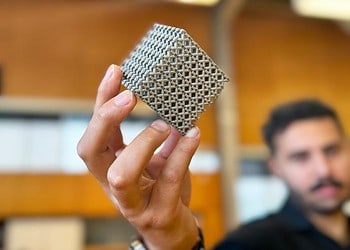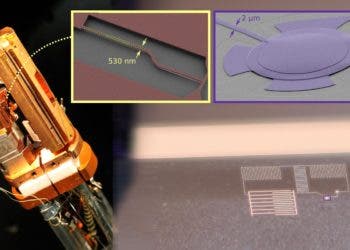Scientists at Duke University have devised a metamaterial that uses microwaves to image objects or scenes in real time, all through a set-up no larger than a book. Currently, the same imaging is being made with robust, huge machinery – the kind you see in airports used to scan people before they board flights – that are very expensive and contain moving parts. Applications for the new metamaterial are boundless, according to the researchers, ranging from security to self-driving cars.
A digital camera, much like the human eye as well, images by focusing light through a lens which then hits millions of individual silicon detectors, one for each pixel in the final photograph. The system works great for visible light since optical wavelengths are short and can fit in tiny spaces, like the back of the eye (retina).

When delving in longer wavelengths, such as microwaves or millimeter waves, things aren’t that easy since imaging currently requires detectors that are slow, expensive to construct, and require continuous reorientation to capture targets. You see, building a microwave camera that works similarly to an optical camera would require millions of detectors as well, which for microwaves however are orders of magnitude more expensive and larger. So engineers developed a single detector or a line of them and moved them from point to point across the plane you wish to capture. This works fairly well, but the resulting imaging solution is a behemoth in size, pricing and maintenance efforts.
Researchers at Duke University, however, have devised a metamaterial – a material whose properties can’t be found in nature – that seeks to replace walls and walls of materials or extremely cumbersome machinery. The device is only 40 centimeters long and consists of a single aperture that doesn’t move and which can capture a scene at various microwave frequencies. This is then fed to a computer which processes the information and retrieves an image.
Slimming down millimeter wave cameras
In broader detail, the detector consists of three plates – two copper plates with a plastic one sandwiched between – each etched with a pattern of box-like structures, 2 millimeters long that permit different lengths of microwaves to pass through. This design allows for focusing on a narrow range of frequencies in the microwave range and, ultimately, capturing an image.
It has a large aperture, which is good for resolution, but it’s thin, has no moving parts, and it made of relatively cheap materials,” John Hunt, a graduate student at Duke and corresponding author.
The Duke researchers have a fast experience in working with metamaterials. Not long ago, scientists from the prestigious university announced they had built the first working invisibility cloak.
Light doesn’t pass through walls, clothing or weather like fog – microwaves do. So you can imagine what kind of interest is invested in microwave imaging technology, especially in the field of security. The technology is employed in many other applications as well, like self-driving cars which use a smaller, yet still huge and expensive microwave aperture that can sense obstacles in front of the vehicle.
“To my knowledge, this is probably the first example of metamaterials and compressive imaging in the same paper,” said Kevin Kelly, an electrical engineering professor at Rice University who helped develop the first single-pixel camera.
Hunt and his team demonstrated their work after their reconstructed the placement of various objects scattered in a room that was bombarded with microwaves. Since the metamaterial consists of a single slab, the images were cross sections of a horizontal plane through the scene, showing range only. Still, the objects were easily identified. More research will allow for developing a 2-D aperture capable of capturing 3-D images – then we’re pretty much open for business. Imagine a device in the future no bigger than a smartphone today that you can use to image through walls or clothing. It will be interesting to see how such technology will be controlled and enforced.
“This is an elegant solution to a lot of problems in microwave, millimeter-wave, and terahertz imaging,” says Eddie Jacobs, an electrical and computer engineering professor at the University of Memphis, in Tennessee
The system was reported in the journal Science.
via IEE






